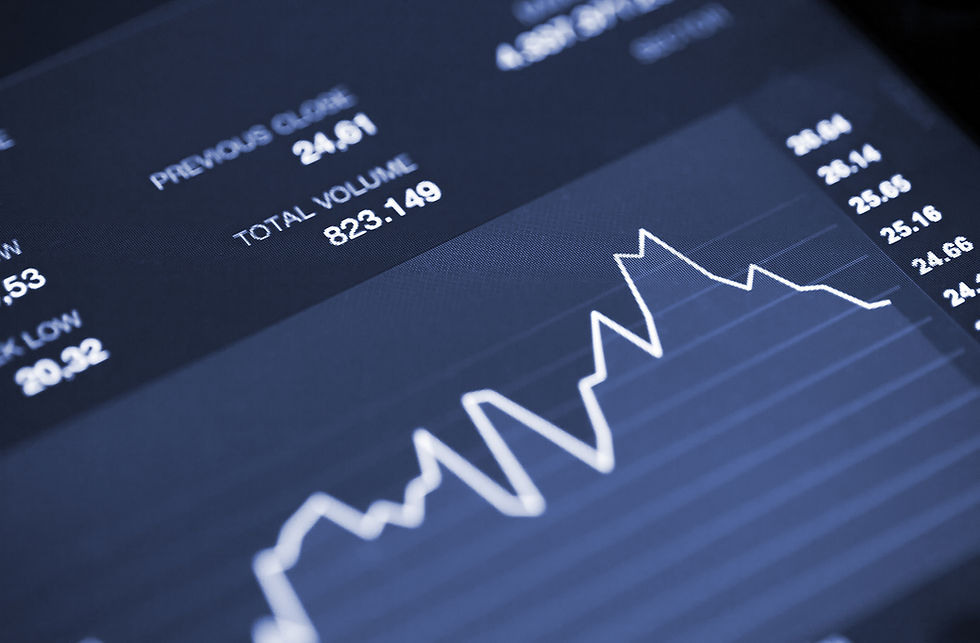US Tech bubble? Nah...
- SAMIR GILANI

- Feb 15
- 3 min read

This article discussed the current market sentiment regarding large-cap tech stocks and the concern around a potential major correction. Much of this concern stems from the historical reference to the US tech bubble in 2000, which took approximately 15 years to recover. Another associated argument revolves around the fact that the US accounts for a record 60% of global stock market value, with US tech stocks being the primary drivers, hence making another significant upward move seems less probable now. I believe both arguments warrant a more in-depth investigation and analysis.
Let's address the simpler argument first, regarding the US's dominant market position. It is premature to conclude that an upward move in US stocks is less probable based solely on the US's 60% share of global stock market value. If US markets were to rise by 15% while the rest of the world (ROW) markets rose by 20%, the ratio between the two would decrease, suggesting that an upward move is still plausible. Additionally, if the ROW experiences a higher level of secondary market activity, such as IPOs and secondaries, resulting in increased market capitalization in the denominator, the ratio would also decrease. Therefore, relying solely on a simple ratio of US market cap versus ROW market cap and assuming a decrease in the ratio would limit an upward move in US stocks, is mathematically incorrect. It is possible for the US market to rise while the ratio falls.
Moving on to the US tech sector, it is undeniable that large US tech companies have made significant contributions to the overall performance and market capitalization of the US stock market. However, comparing the current upward move to the tech bubble of the 1990s and 2000s, which took about 15 years to reach its peak, is an oversimplified analysis that I do not agree with.
To understand the context, we need to consider the nature of technology during the 1990s and 2000s. The tech boom at that time was predominantly focused on enterprises, driven by emerging internet and networking technologies. Businesses were rapidly adopting and integrating technology into their operations, leading to a surge in demand for enterprise software, networking equipment, and related services. Companies like Cisco, Sun Microsystems, and Nortel Networks were trading at PE ratios of 200x, reflecting the euphoria surrounding investments in networking infrastructure. E-commerce companies like pets.com and Etoys.com were also part of the frenzy, as investors believed they represented the new frontiers of commerce. Internet service providers like AOL Time Warner were considered crucial due to their role in internet connectivity and communication. The euphoria of that time was largely centered around the internet as the next frontier.
In contrast, today's tech landscape is significantly different. Not all technology companies are the same. The current tech sector places significant emphasis on both enterprise and consumer markets. While there may be concerns about large-cap tech stocks, it is important to recognize the evolution of the industry and its players. Comparing today's tech stocks to those of the previous era would be inaccurate. It is essential to differentiate between categories and acknowledge that today's technology is more consumer-oriented. For example, the largest tech company in the world primarily caters to consumers and produces excellent consumer products. You could argue that Apple is a consumer products company rather than a tech company because tech products today are being consumed like consumer products. Technology has become ubiquitous and accessible as consumer products, which was not the case in 2000 when access to advanced technology was more limited and primarily focused on the enterprise.
Given these distinctions and the shifting dynamics of the tech industry, it is not reasonable to assume that a similar bubble will burst as it did in the 2000s. The players, sectors, and market landscape have undergone substantial transformations, and it is crucial to avoid generalizations by placing all technology stocks in the same category as their predecessors


Comments